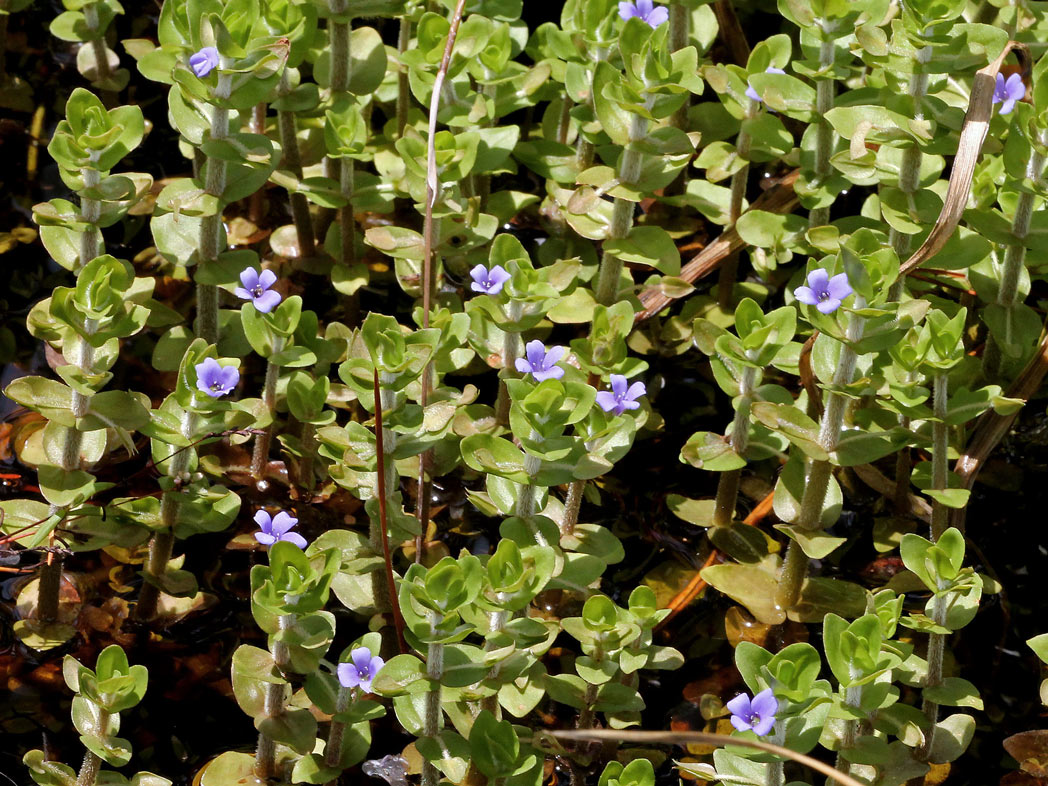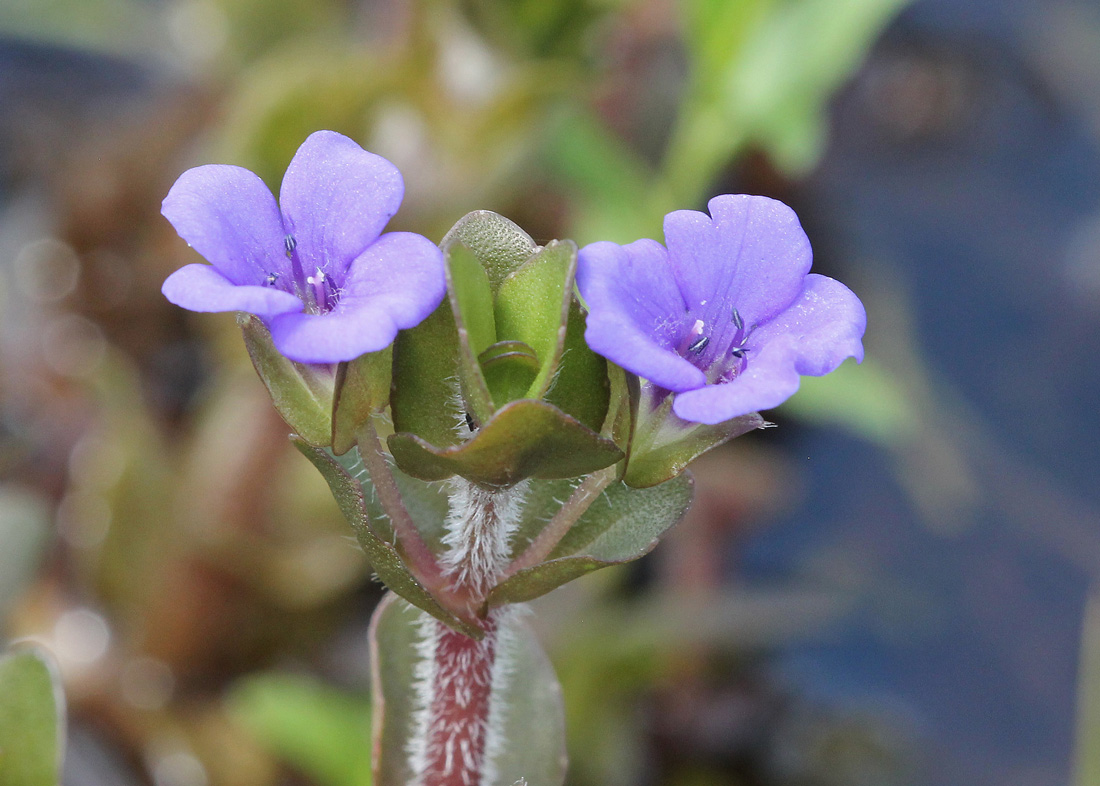Lemon bacopa
Pictured above: Lemon bacopa (Bacopa caroliniana) by Mary Keim. Click on terms for botanical definitions. View post as a PDF.
Lemon bacopa is a low-growing, herbaceous wildflower that occurs naturally in very moist to aquatic habitats such as along pond and stream margins, and in swamps, marshes and shallow ditches. It typically blooms late spring through fall, but can bloom year-round. Its nectar attracts a variety of small pollinators.

Lemon bacopa’s small but showy, purplish-blue flowers are 5-lobed, tubular and copious. Stems are succulent and hairy. Seeds are borne in inconspicuous capsules. Leaves are succulent, clasping and oppositely arranged. They emit a lemony scent when bruised or crushed, giving the plant its common name. They can also be steeped in water to make a flavorful, lemony tea.
A close relative of Lemon bacopa is the more commonly occurring Herb-of-grace (aka Waterhyssop) (Bacopa monnieri). Although they look similar and are found in similar habitats, Herb-of-grace does not emit a lemon scent. As well, its flowers are pale lavender to white and its leaves are not clasping. Neither Bacopa species are related to hyssop (Hyssopus sp.), which is in the mint (Lamiaceae) family.
Family: Plantaginaceae (Plantain family)
Native range: Nearly throughout Florida
To see where natural populations of lemon bacopa have been vouchered, visit florida.plantatlas.usf.edu.
Hardiness: 8–11
Soil: Moist to wet (saturated or inundated), slightly acidic soils
Exposure: Full sun to minimal shade
Growth habit: up to 6” tall but widespreading
Propagation: Divisions, cuttings
Garden tips: Lemon bacopa makes an excellent groundcover in wet or saturated landscapes. It can spread to form large mats.
Lemon bacopa plants are often available at nurseries that specialize in native plants. Visit PlantRealFlorida.org to find a native nursery on your area.
For more information on other Bacopa species, see:

